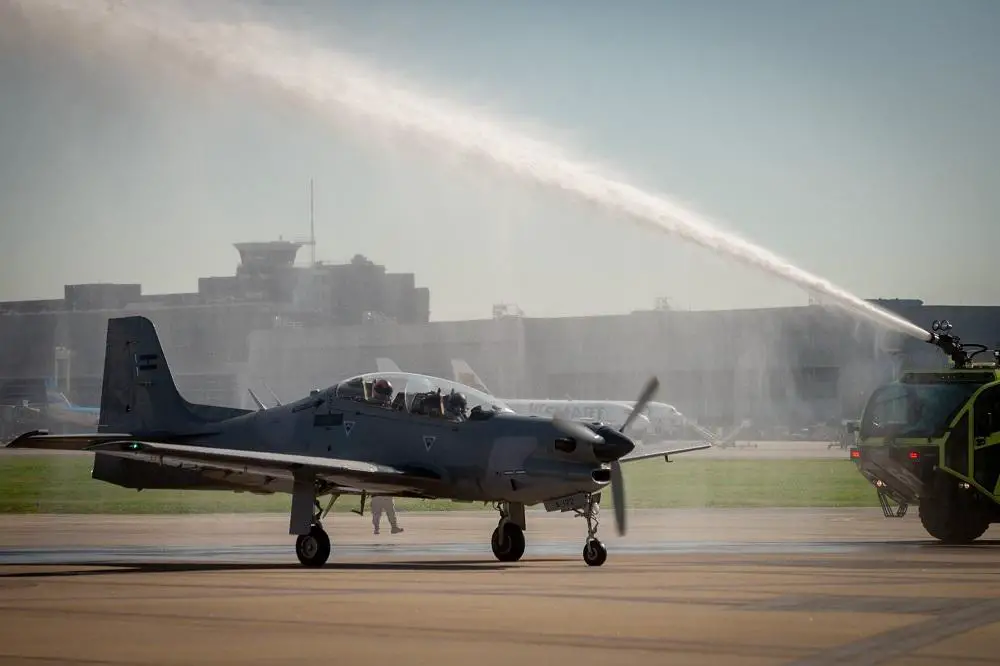The Argentine Air Force (Fuerza Aérea Argentina, FAA) has received the first Embraer EMB-312 Tucano modernised by Redimec, in a ceremony that also included delivery of the third (of 12) UC-12B Herons procured from US Navy stocks. Four aircraft are already going through the process, while a second contract for a further eight awaits signature. Work on the Tucano was undertaken by Redimec at the Área de Material Río Cuarto, the service’s principal maintenance centre. These modification enable flights to be made with night vision systems, so both internal and external lighting systems were also adapted. The upgrade includes a new multifunction display with synthetic vision, as well as new communications and navigation systems.
In June 1987, the Argentine Air Force received the first batch of 15 aircraft from a total of 30 aircraft on order, and the type was assigned to replace the Morane-Saulnier MS.760 Paris. Based at the Military Aviation School in Cordoba, the EMB-312 Tucanos were used as trainer aircraft for the Joint Basic Course of Military Aviation program, producing pilots for the Argentine Air Force, Navy, and Army. In the first 25 years of its service with the Argentine Air Force, the aircraft accumulated 104,000 flight hours and trained over 800 pilots. FAdeA is developing the IA-73, a primary trainer to replace EMB-312 Tucano. The type aircraft will be relocated to the northern Argentina, where they will be armed and used for air interdiction and surveillance role.

The Embraer EMB 312 Tucano (English: Toucan) is a low-wing, tandem-seat, single-turboprop, basic trainer with counter-insurgency capability developed in Brazil. The Brazilian Air Force sponsored the EMB-312 project at the end of 1978. Design and development work began in 1979 on a low-cost, relatively simple new basic trainer with innovative features which eventually became the international standard for basic training aircraft. The prototype first flew in 1980, and initial production units were delivered in 1983. The Tucano made inroads into the military trainer arena and became one of Embraer’s first international marketing successes. A total of 664 units were produced (504 by Embraer and 160 by Short Brothers), flying in 16 air forces over five continents.
The EMB-312 Tucano was the first turboprop trainer developed from the beginning with military jet capability. A Martin-Baker Mk8L was fitted. It was Embraer’s first aircraft with tandem seats designed with a raised rear seat optimized for an uninterrupted view from the rear cockpit and a frameless bubble canopy for unobstructed visibility. Major aircraft features include an automatic torque control system and the jet-like, single-lever throttle which combined both engine power and propeller pitch. High manoeuvrability, stability at low speeds, and four underwing pylons providing for up to 1,000 kg (2,200 lb) of ordnance, allow the training aircraft to engage in tactical bombing campaigns in low-intensity conflict or counterinsurgency environments and in counternarcotics interceptions.
















